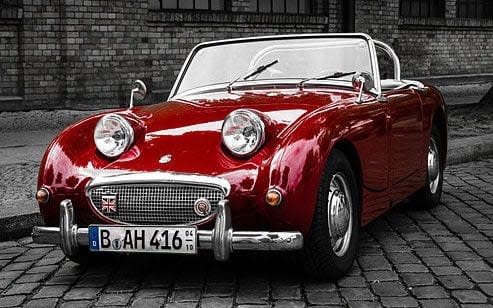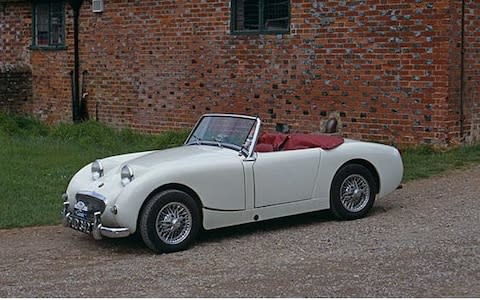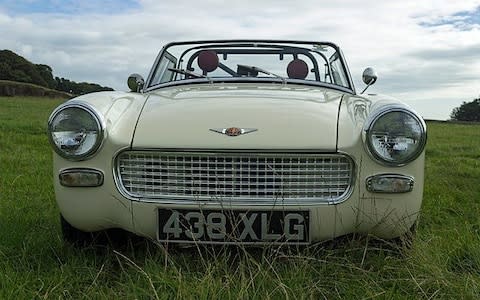Austin-Healey Sprite at 60: the small British sports car that made a huge impact

On May 20 in 1958, Longbridge’s PR department made the following highly immodest proclamation – “Today the Austin Motor Company makes motoring history with the announcement of a completely new small and inexpensive sports car”.
The Austin-Healey Sprite promised “full size performance” but was small enough for a chap to “keep in his bike shed” while an advertising film featuring Roy Salvadori and John Bolster at Silverstone had thousands of motorists reaching for their cheque books, cravats and flat caps – see the video below of Salvadori testing the car.
The Sprite was famously the result of a 1956 meeting between Leonard Lord, the managing director of the British Motor Corporation, and Donald Healey. Both parties identified the demand for a compact two-seater along the lines of the pre-war Austin Seven Nippy , one that would hopefully see its owners graduating to a MGA or an Austin-Healey 100/6 within a few years.
The new sports car would employ as many existing components as possible – the gearbox, front suspension and rear axle were from the Austin A35, the rack and pinion steering from the Morris Minor and power would be from the familiar 948cc A-series engine augmented with twin SU carburettors.
The Sprite was also to be the world’s first mass-produced sports car to employ unitary construction techniques and it was originally intended to be equipped with retractable headlamps. These were ultimately judged to be too expensive to manufacture and the result was the immediately recognisable “Frogeye” profile.
The official PR announcement made much of the Sprite following in the tradition of the marque – “With the introduction of the Sprite, Austins are opening a new era in the sports car field, as not since 1938 has a small sports car been made by the Company” – and none of the other “Big Five” of British car manufacturers offered a comparable model.
“The most exciting car on the road for £668 17s, tax paid” was within the financial reach of those enthusiasts whose previous set of wheels was a home-built Ford 100E-powered kit car or a second-hand Singer Roadster.
The latest Austin-Healey was a contemporary design with a top speed of more than 80mph that still retained many of the trappings of a “traditional” British sports car, from the detachable side-screens and the lack of exterior door handles and locks.

BMC further boasted that “a wide range of extra equipment is available including heater and demister, windscreen washer, rev-counter, tonneau cover and laminated windscreen”.
A further extra was the front bumper on home-market cars, while the non-adjustable passenger seat made travel for the very tall an interesting challenge, but thus was all par for the course for a 1958-vintatge sports car buyer. The Sprite also lacked a boot lid – this was due to the rear panel being stressed – which proved a considerable nuisance when attempting to change a wheel.
The press raved about the Sprite; Motor Sport concluded that “at the price this latest product of Donald Healey and the Austin Motor Company is a vehicle of many merits and no vices” and Autosport thought “every credit is due to the manufacturers for instigating what will undoubtedly prove to be a new era in the popularity of small-capacity, open car motoring”.
On the other side of the Atlantic, Road & Track thought that the Sprite “offers more fun per dollar than anything we have driven for a long time”.

The “Frogeye” was replaced by the slightly more conventional looking Mk2 in the spring of 1961 and by that time the Austin-Healey had revolutionised the British sports car market. For the price of a Morris Minor or a Ford Anglia, a driver could enjoy truly exuberant motoring that cars cost twice or three times the amount might struggle to match.
“For the sheer joy of driving – and being able to afford it – it’s the Sprite that’s a delight wherever you go” claimed the advertisements in 1959. And for once this was not mere sales hyperbole.
For tips and advice, visit our Advice section, or sign up to our newsletter here
More classic car stories at Telegraph Cars

 Yahoo News
Yahoo News 